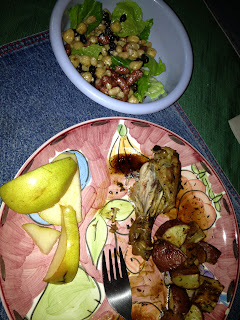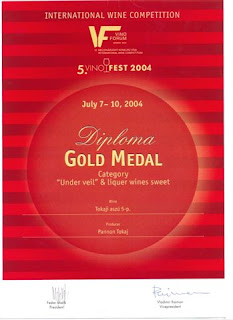the Tokaji
The Tokaj wine region, officially called Tokaj-Hegyalja, was declared a world heritage site in 2002 and as producer of the world’s oldest botrytized wines it has a number of unparalleled assets:
– incomparable soil and microclimate: clay or loess soil on top off volcanic subsoil, a microclimate determined by the sunny, south-facing slopes and the proximity of the Tisza and Bodrog rivers, conducive to the proliferation of Botrytis Cinerea (noble rot) and the subsequent shriveling of the grapes (that leads to the development of aszú);
– indigenous grape varieties that have been cultivated here for centuries: Furmint, Hárslevelû, and Sárga Muskotály;
– a vast network of cellars carved out of solid rock, providing a constant temperature of around 12°C and high humidity of around 95% that is ideal for the aging of the wines;
– a well-regulated appellation system, established many years ahead of its time:
1571: first known mention of Aszú wines
1630: Máté Sepsy Laczkó describes the aszú vinification method that is still used today
1655: the manual selection of the botrytized "aszú" berries is regulated
1737: the winegrowing area is delimited by royal decree
1772: the world’s first vineyard classification system is born in Tokaj-Hegyalja
– the knowledge of people brought up in winegrowing traditions now dates back many generations.
Name usage
TOKAJ is the name of the main town lying at the confluence of the Tisza and the Bodrog, lending its name to the region, also referred to as TOKAJ-HEGYALJA. TOKAJI is the adjective (adjectives being formed in Hungarian by the addition of –i to a substantive: Tokaj>>tokaji, Eger>>egri, etc.), normally used to describe the wine as in “Tokaji aszú”. TOKAY is an alternative, but obsolete, spelling.
Major facts and figures:
Wine growing area: 5967 ha
Average property size: 0.57 ha/property
Villages belonging to the region: 27
Tokaj as a proportion of overall Hungarian vineyard area: 6.3%
Number of registered producers: 14575
Number of wineries: 588
Number of wineries producing the full range of Tokaj wines (aszús, etc.): 48
History
Vines had been cultivated here long before the discovery of the effects of botrytis, which itself dates back to around the year 1650 when locals seeking shelter from an imminent Turkish raid missed the harvest, according to Tokaj folklore. On their return, they found the berries had shrivelled up and for want of better grapes they made do with the resources that they had. Máté Sepsy Laczkó, chaplain and winemaker, presented the resultant wine made from the aszú berries to his mistress the following spring, more than likely with a slight lump in his throat. However, she apparently liked the wine – or at least we have to conclude as much given its glorious future that lay ahead.
The story, somewhat mythic and ostensibly far fetched, does nevertheless contain more than a grain of truth. The basic method of aszú-wine making was first described by the chaplain of the Rákózis, Máté Sepsy Laczkó in the early part of the 17th century, and documents suggest it must have already been existing in the 1500s – more than 200 years before botrytized wines were made anywhere else in the world. By the end of the 17th century Tokaji was firmly established as one of the greatest wines of the world. The 18th and 19th centuries saw Tokaji reach the height of its fame, as the drink of choice of royal courts the length and breadth of Europe.
In a desperate example of wine-diplomacy, Prince Rákóczi tried to secure the favour, and more importantly, the money of Louis 14th in his insurrection against the Habsburgs. The Sun-King was charmed by the wine and his regal words – vinum regum, rex vinorum, wine of kings, king of wines – have been attached to the wine ever since. Louis 14th even promised his financial aid, although we may suspect he must have been led by political rather than organoleptic motives. In the end, he failed to keep his word as he was much too busy fighting on all fronts. Ultimately, the Habsburgs reigned victorious and the fine vineyards of the rebel Prince Rákóczi were confiscated in the name of the crown in whose hands they remained for the next few centuries.
The esteem afforded Tokaj and the ensuing prosperity it brought was duly nurtured. Royal decrees were issued to regulate winemaking practices in order to safeguard quality standards. The first ever known system of classified growths was devised in Tokaj whereby small plots of vineyards deemed to produce good to very good wines on a permanent basis were ranked as first, second and third growths on several subsequent occasions, such as in 1700 and 1772.
After such a glorious past Tokaj’s tragic fate in the 20th century is almost beyond belief. The phylloxera louse, the troubled history of Central Europe, the disaster of the two World Wars and the holocaust that saw many of the Jewish négociants tragically perish all contributed to the region’s downfall. The advent of the communist system dealt the final blow. In the frenzy of levelling out differences across all walks of life, vinification, though importantly not grape-growing, was centralised into a single state holding. Huge-quantities were produced for an insatiable and undiscerning market with a disastrous effect on quality and image. The fact that some truly fabulous wines continued to be made under such adverse circumstances is a real tribute to the region and its winemakers.
In 1989, as the system toppled, a vigorous renaissance took hold as Tokaj reinvented itself in an astonishingly short time. A number of domestic and foreign investors as well as local producers have created new wineries that combine ancient traditions with state of the art technology. Their aim is nothing less ambitious than to restore Tokaji to its former glory. The future definitely looks bright; and thanks to its dedicated winemakers, Tokaj finally seems to be on the right path once again.
Timeline of events:
13th century
first records of wine making in the region
14th century
labyrinthine cellars are carved out of the rock
15th century
first written mention of Tokaji (M. Istvanffy: Regni Ung. Historia, Cologne)
16th century
major breakthrough of Tokaji wines on the international scene, establishing Tokaji as the world’s most expensive and most sought after wine. First Aszú wines are made: Aszú wine is mentioned in the Nomenclature of Balázs Fabricius Szikszai (Vinum passum: aszu szeoleo, i.e. aszú grapes).
17th century
The Rákóczi era. Tokaj is famous all over Europe. The Russian and Polish export markets drink up almost half of the production. Mate Sepsy Laczko describes the method of aszú wine making.
18th century
Louis the 14th names Tokaji “the king of wines, wine of kings”. The tsars base a unit of Cossacks in Tokaj with the sole purpose of buying and safely escorting the best aszú to St. Petersburg.
1730 – the first classification of Tokaj vineyards in Matyas Bel’s monumental work, “Life of the peoples of Hungary around 1730”
1772 – the first semi-official (royal) classification
19th century
phylloxera devastates vineyards in the 1880s and 1890s
20th century
after the fall of the Hapsburg monarchy, with the division of Hungary the vineyards of Újhely, Szõlõske and Kistoronya (178 hectares in all) are joined to Czechoslovakia (today: Slovakia). The socialist planned economy further devastates the region after 1945.
1989 – a new beginning after the collapse of the Berlin wall.
Terroir
The Tokaj wine region was formed where the great Hungarian plane meets the Zemplén mountains and extends over 5000 hectares (12000 acres) on the southerly, volcanic slopes of the Zemplén hills at the confluence of two rivers, the Tisza and the Bodrog.
The effects of past volcanic activity should not be underestimated. The subsoil is largely made up of volcanic tufa, with slight variations from vineyard to vineyard, but always with an unbelievably rich minerality. The roots go down deep into the base volcanic rock, proffering a distinctively mineral touch to the wines of Tokaj. The top soil is mostly loess in the south, a well as around the Tokaj hill while it turns to mostly clay in the north. But as one climbs the vineyard slopes, the soil gets progressively shallower, until there’s almost nothing but the bare volcanic tufa to foster the vines.
Climate
The climate is harsh continental with dry, hot summers and cold winters. The autumn is fairly long and dry, with Indian summers typical. The southern slopes and gently undulating hills and vales protect the vines from the ferocity of the northerly winds and secure a high number of hours of sunlight. The real wonder of the region is produced in autumn, as the combination of misty mornings and sunny afternoons creates ideal conditions for noble rot. Mist rises from the two rivers, sweeps in among the rows of vines and settles over the cold October vineyards. The sun then dispels the mist and warms the vines. This is the moment that Botrytis cinerea, a microscopic fungus that thrives under warm and humid conditions, has been waiting for and it then attacks the berries and punctures their skin. The berries exude water and shrivel up, thereby achieving levels of extreme concentration. These botrytized, or aszú berries as they are called in Hungarian, are then picked and used to make different styles of wines.

Facts and figures (100 year averages):
Longitude:
21o 10’ - 21o40’
Latitude
48o 7’ - 48o 30’
Temperature (annual average)
10,8 oC
First frost between
15th-20th October
Annual precipitation
525 mm
Precipitation during vegetation period:
313 mm
Sunlight hours:
2009 hours/year
Active heat-summation:
1600-1800 0C
Elevation:
120-250 m
Number of days with average temperature above 10°C:
175-180 days
Last frost:
20th April
Highest temperature:
33 0C
Lowest temperature:
-19 0C
Month with most precipitation:
June
Snow cover period:
25-40 days
Typical wind direction:
North-easterly
the information was pinched off www.tokaji.hu - the photos are all mine

























































